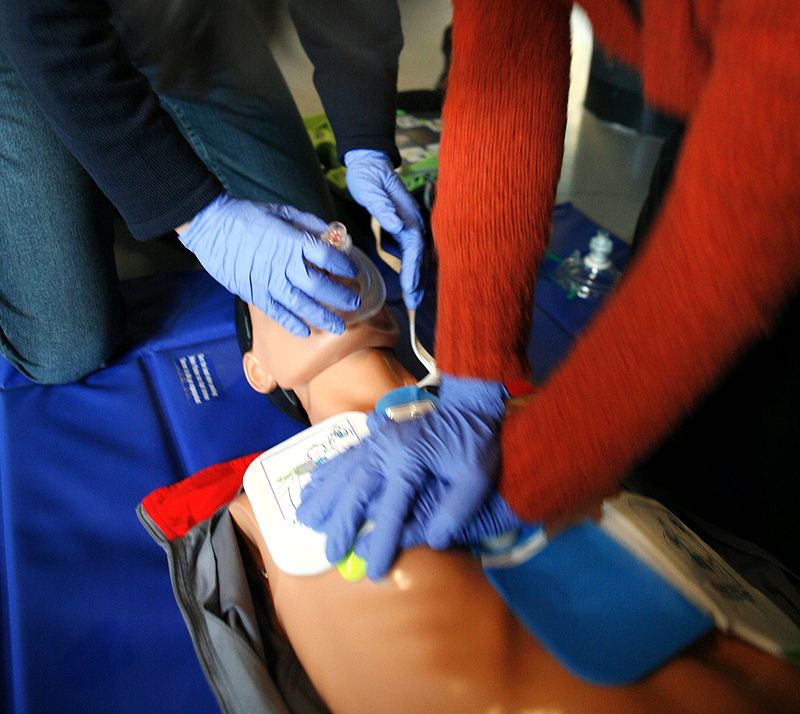Concepts
CPR - Cardio-pulmonary resuscitation
CPR is an emergency procedure that combines chest compressions often with artificial ventilation in an effort to manually preserve intact brain function when the heart has stopped beating effectively (i.e. cardiac arrest).
It is a stop-gap measure until spontaneous blood circulation and breathing have been restored. Restarting the heart might need a defibrillator to shock it, or it might happen of its own accord during CPR.

CPR is done when a person is unresponsive/unconscious, and there is either no breathing, or abnormal (“agonal”) breathing - for example gasping.
It is common (40%) for people who have had a cardiac arrest to gasp for several minutes afterwards, so gasping should not be used as an excuse to delay CPR.
CPR Scenario
Imagine this happening in your surgery tomorrow. How confident are you in your next steps?
Watch the video and assess your current response before we explore the details in the course.

